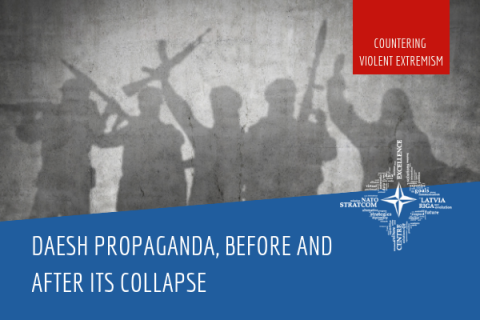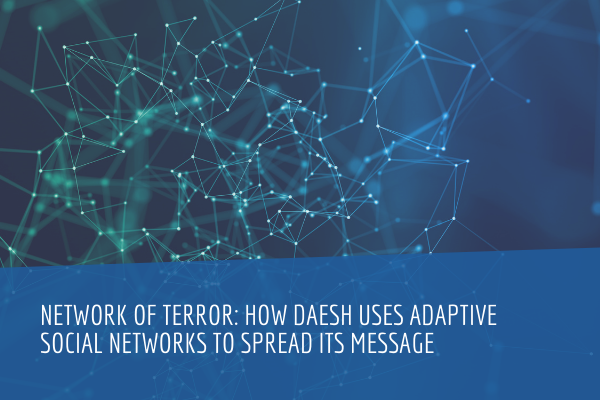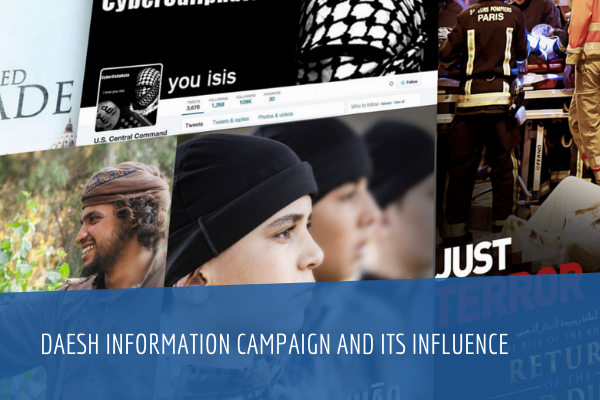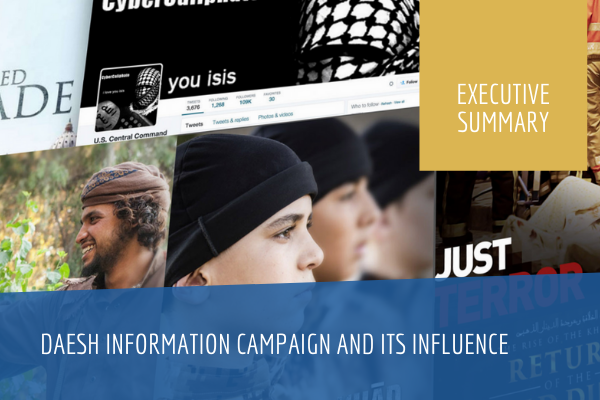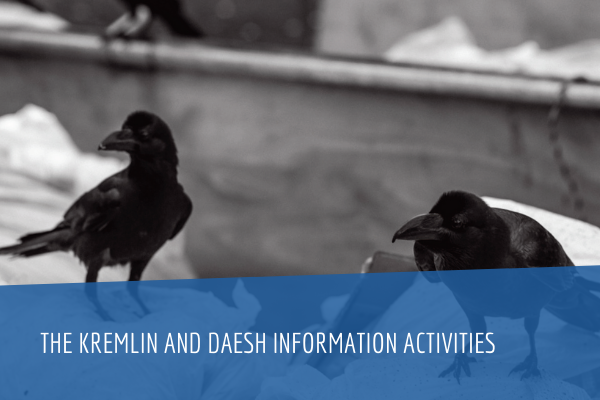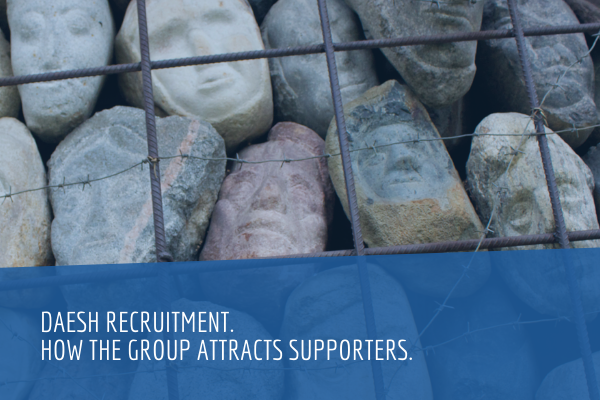Abstract
This report compares two archives of official Daesh media that were compiled four years apart. It explores the nuances of the group’s worldview and tracks how external and internal situational exigencies impacted them during its formative years as a caliphate. It finds that the organisation’s media infrastructure was about one tenth as productive in mid-2019 as it was in mid-2015. The data also show that it was spending more time covering the pursuits of its global network in 2019 than in 2015. Finally, the data point towards a substantial thematic rearrangement in the organisation’s overarching propaganda narrative that manifested in it shifting its story away from millenarian utopianism and towards military denialism. In sum, the data indicate that by 2019 Daesh’s propagandists were far less productive and their aggregate product was more international and less focused on civilian issues. This shift points towards a new phase in the group’s political marketing trajectory, one focused more on survival than on expansion.
Research review
Daesh’s approach to outreach is one of the most researched aspects of the organisation. Most recent analysis explores the group’s activities in one of four areas. The first is genre-based content analysis dominated by explorations of Daesh’s English-language magazines Dabiq and Rumiyah, with some researchers also turning their attention to the Arabic-language equivalent, al-Naba’. There have also been genre-specific analyses of other media used by the group including infographics, videos, and photo-essays. The diversity of subject matter notwithstanding, these studies often reach similar conclusions regarding the presence of mainstream visual rhetoric and outreach motivations like audience and brand development.
The second area of research revolves around the communication dynamics of the organisation’s support-base on social-networking and file-sharing platforms. Between 2014 and 2017 in particular, Daesh’s networks on Twitter, Facebook, and YouTube attracted a great deal of attention as researchers mapped their posts using a range of machine-assisted methodologies.8 With a few exceptions, most studies in this field track the decline of Daesh-related activity on the major social media platforms and note the Daesh adherents’ increasing reliance on the newer, privacy-maximising service Telegram.
The third area of research focuses on doctrine and deployment. Based on Daesh’s own literature regarding strategic communications, as well as one drawn from in-theatre interviews with people living in Daesh territories, these accounts shed light on the strategic logic of the group’s forays into outreach, both on- and offline, and, in so doing, provide a crucial grounding for understanding the full spectrum of its approach to propaganda.
The fourth area of research, to which the present paper contributes, is the bulk analysis of Daesh propaganda. Generally speaking, the findings of these studies are consistent with one another, each identifying a net decline in propaganda distributed by the organisation since 2015. It is worth noting that the consensus is not quite complete, with one account contending that there has been no such deceleration. While a number of these bulk studies now exist, there has not yet been a comparison of the Daesh brand as it was in 2015 at the height of its proto-state ambitions and the Daesh brand as it is now in 2019, attempting to survive after a conventional defeat. This study fills that gap.
Methodology
Due to changes in Daesh’s media distribution strategy over the last few years, the two archives were collected using different methodologies. In mid-2015, when the first dataset was compiled, Daesh disseminated all of its official media through Twitter, with one of its most important outlets, the A’maq News Agency, also publishing content through websites on Tumblr and Wordpress. While many Daesh supporters attempted to broadcast the full extent of its media output through their accounts on Twitter, the platform’s increasingly strict suspension policy meant that it was not possible to rely on any one of them for complete data collection. For that reason, the archive was compiled daily by sifting through the hashtags Daesh associated with each of its official media outlets.
In the years that followed, Daesh transformed its online presence as platform algorithms grew better at undermining its efforts.15 Twitter became hostile territory, not only for the group’s official media disseminators, but also for their audiences. The story was similar on Facebook and YouTube. In this context of rising online inhospitality, the Russian-owned messaging platform Telegram came to the fore. At the time of writing, it remains the single most important platform for Daesh’s communications.16 It was from Telegram that the second archive, compiled in mid-2019, was drawn. During the month in question, two official outlets were charged with distributing the entirety of Daesh’s online communications. One was Nashir, which translates from Arabic to English as ‘Publisher’, and the other was the A’maq News Agency, the aforementioned Daesh newswire. Operating alongside these, a supporter-run dissemination network called the Nashir News Agency aggregated posts from both Nashir and A’maq on a minute-by-minute basis and published them simultaneously all in one place. It was from this network that the second dataset was collected. To ensure completeness, all data were cross-referenced with output from the Nashir and A’maq News Agency channels on Telegram.
Both archives were coded using the same nine variables—date, type, state, location, media production unit, theme, sub-theme, title, and language—and each of the items was assigned a unique identification code. To avoid repetition and subsequent skewing of the data, operation claims, which are always aggregated in news bulletins and newspapers, were not counted in either archive.
Conclusion
This report has compared two archives of official Daesh media that were compiled four years apart—one at the zenith of its proto-state ambitions, the other at its nadir. The study analysed how external and internal situational exigencies impacted the group’s communication priorities, demonstrating that Daesh’s media infrastructure in mid- 2019 was about one tenth as productive as it was in mid-2015. Moreover, now in 2019, Daesh is focusing a much larger proportion of its efforts on covering the pursuits of its global network than it was in 2015. Perhaps most importantly, the data point to a significant thematic shift in the organisation’s overarching narrative—away from civilian utopianism and towards military denialism.
In addition to providing an account of how Daesh has changed as an organisation during the four years in question, this analysis demonstrates the inherent plasticity of its strategic narratives. When the going first got tough in 2016, Daesh’s initial course of action was to publish denialist propaganda in an attempt to soften, in the eyes of its supporters, the territorial blows it was receiving. However, as the group continued to experience setbacks in Syria and Iraq, it modified its brand more readily. The losses of Mosul and Raqqah in 2017 were a further impetus for a change in strategy. The material reality of the ‘caliphate’ in Syria and Iraq was in tatters and by 2018 Daesh media outlets no longer tried to claim otherwise. Instead, the organisation changed direction, untethering the brand from the Middle East and focusing on its network of global affiliates. This trend grew more pronounced over time. By mid-2019, when the second archive was compiled, the story that Daesh was telling its supporters, both in-theatre and online, had transformed substantially. Triumphalist claims were replaced with a story of embattled resistance—a narrative that is no less appealing to true believers.
This transformation matters to practitioners of strategic communications for a number of reasons, the most important being that the implications here are not restricted to Daesh. Regardless of ideology, insurgent groups are always looking to learn from one another to improve their asymmetric prospects. Because of Daesh’s proclivity to adaptation, its tactical and strategic innovations in outreach are guaranteed to spread far and wide. Hence, even if the threat from Daesh had disintegrated entirely upon its defeat at Baghuz—a notion the attacks in Sri Lanka resoundingly refuted—it would still be necessary to understand the group’s use of strategic communications to navigate the transformation it has undergone over the last few years because other groups, both followers and rivals, will likely be following in its footsteps before long.
